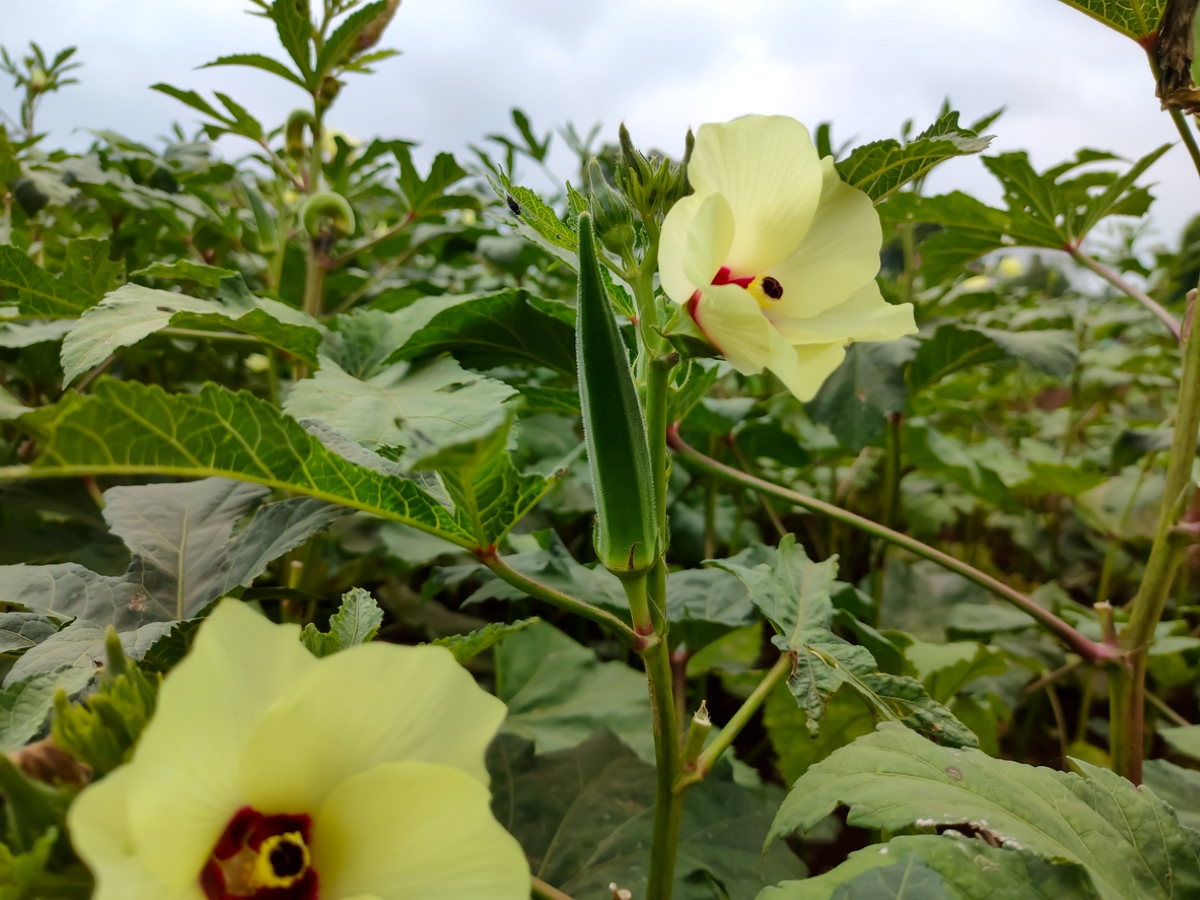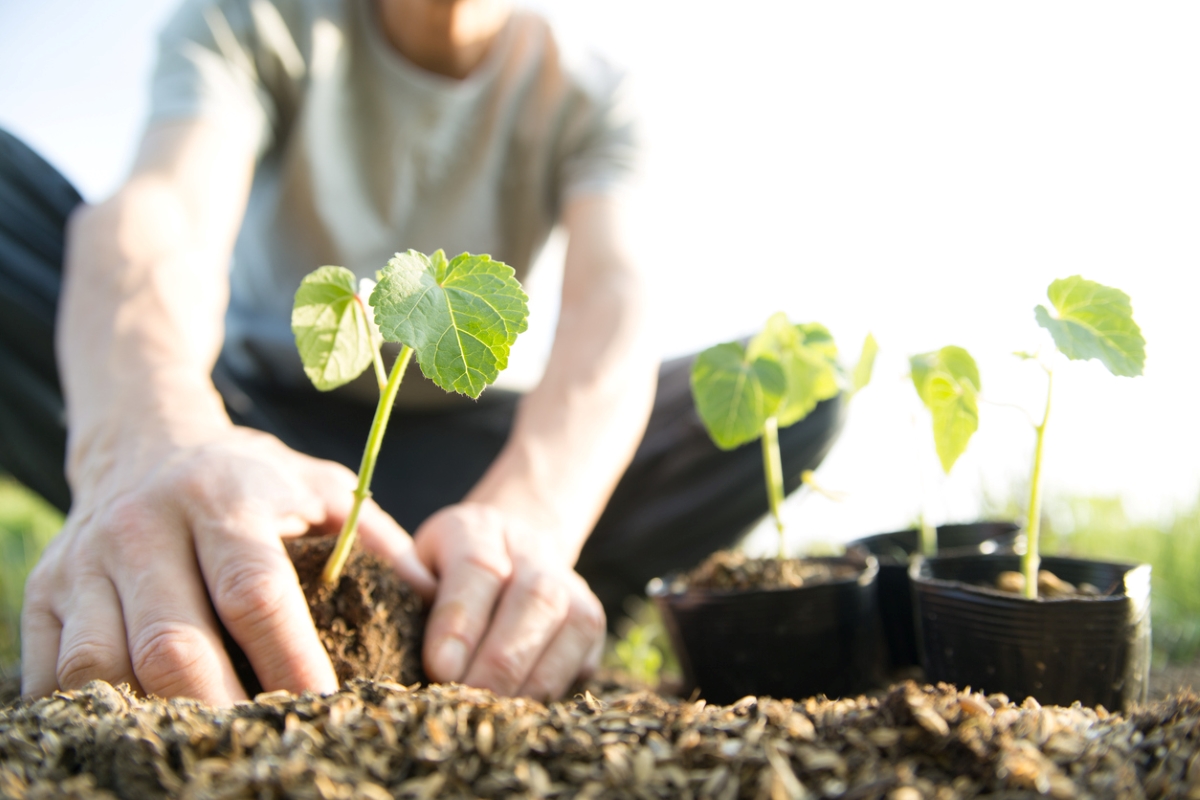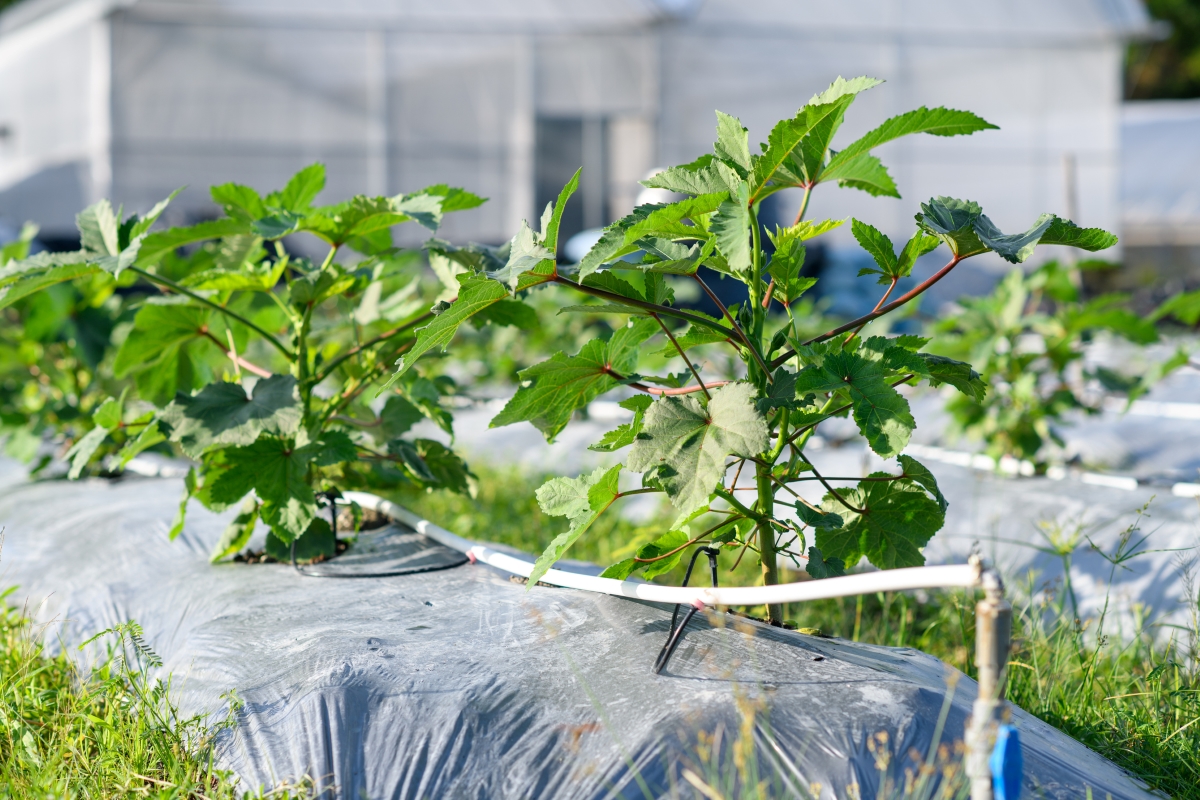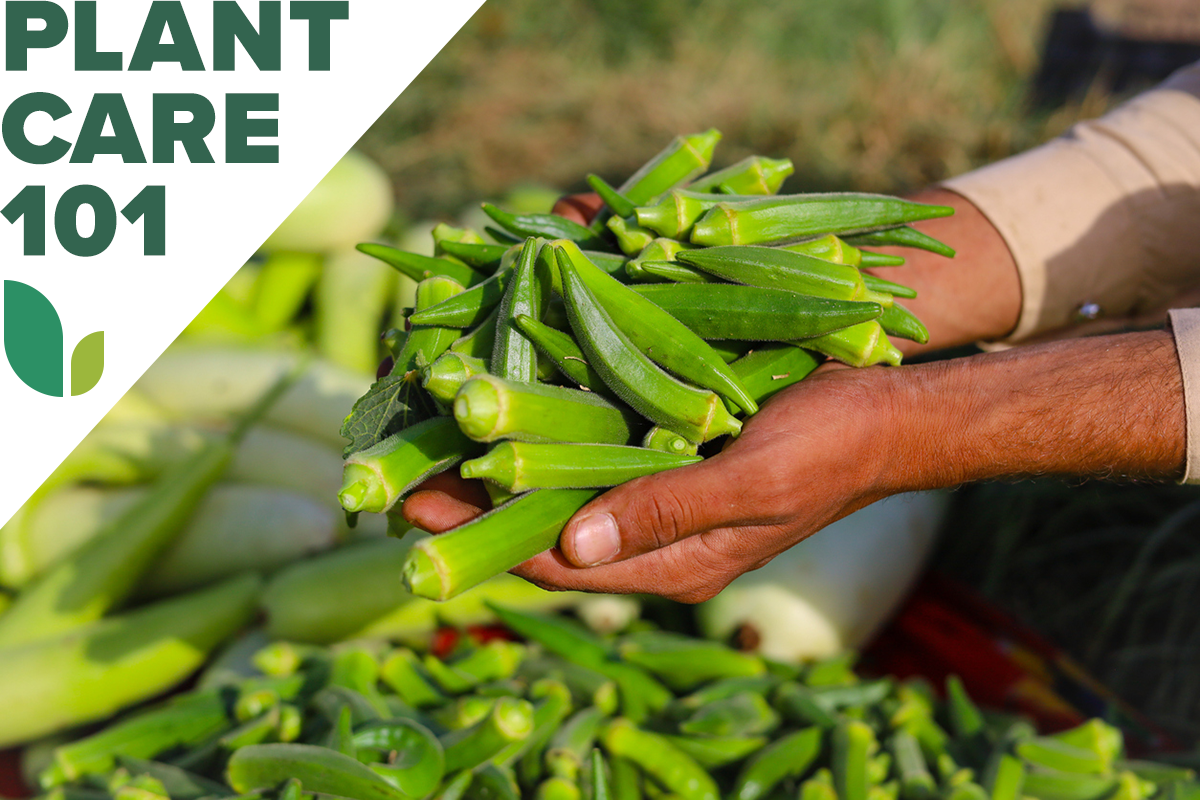We may earn revenue from the products available on this page and participate in affiliate programs. Learn More ›
One of those vegetables people either love or hate, okra is the immature seedpods of a hibiscus-like flower. It has what the University of Massachusetts calls “a sweet, grassy flavor,” its mucilage thickening stews and soups.
The plant originated in either tropical Asia or Africa before being brought to America by enslaved people. So, it prefers plenty of sun and heat and doesn’t grow well in cool, damp climates. If you are only familiar with the often tough store-bought kind, learn how to grow okra in your garden and you may soon be consuming gumbo with gusto!
Growing Okra at a Glance
Common Names: Okra, gumbo, lady fingers
Scientific Name: Abelmoschus esculentus
Hardiness Zone: 9-11
Soil: Fertile, well-drained
Light: Full sun
Water: Medium
Food: Balanced organic fertilizer
Propagation: Seed
Safety: Edible, causes contact dermatitis
Okra Characteristics

Although okra vegetable plants usually top off at about 6 feet, they can vary from 2-foot dwarf cultivars to 10-foot jumbo gumbos! Most produce 2 to 3 inch pale yellow flowers with red or burgundy centers, which bloom for only one day and shortly are followed by green, white, or red seed pods. Found in the joints between the plants’ stems and its hairy five to seven-lobed leaves, those five-sided pods narrow to points.
Hardy in Zones 9 through 11 but usually raised as an annual, okra is self-pollinating and doesn’t require hand pollination. It makes a good trap plant for stink bugs, since it tends to draw those insects to itself and away from other nearby fruits and vegetables. The season for okra runs until autumn frosts, which will kill the plants.
Recommended Okra Varieties
Grow dwarf varieties of okra to save space, spineless varieties to save your skin!
- ‘Burgundy’: Also called ‘Red Burgundy,’ this showy cultivar grows to 5 feet with burgundy stems and 6 to 8 inch burgundy pods which stand out in striking contrast to its green leaves.
- ‘Clemson Spineless’: The most popular okra, this spineless green variety grows to 5 feet with pods up to 9 inches long.
- ‘Little Lucy’: A dwarf variety similar to ‘Burgundy’ but only growing about 2 feet tall with 4-inch pods, this cultivar makes a good choice for containers.
Planting Okra

Put off okra planting until your soil warms up.
When is the best time to plant okra?
Sow okra in your garden about 2 weeks after your last spring frost date when the temperature of the soil has risen to 65 or 70 degrees. When planting okra seeds, keep in mind that they tend to rot in cold, wet soil, so you might want to start them indoors 6 weeks before your last frost date.
Where can okra grow?
Choose a location in full sun with well-drained fertile soil that has a pH between 6 and 8. Avoid locations where other plants susceptible to nematodes—such as tomatoes and sweet potatoes—have been in recent years. If your ground is heavy and soggy, try growing okra plants in a raised bed or container instead.
How do you plant okra?
Because the seeds have a hard coat that can slow germination, scratch them with sandpaper or an emery board and soak them in lukewarm water for 24 hours before sowing them.
- When planting okra, sow the seeds 1 inch deep and 2 inches apart in damp garden soil or seed-starting mix.
- Watch for your okra sprouting, which should occur in 5 to 10 days.
- Thin or transplant the okra seedlings to stand 1 foot apart from each other.
Can you grow okra in containers?
Due to okra’s long tap roots, you’ll want to select pots for it that are at least 12 inches deep and hold at least 5 gallons of soil. To avoid a lanky look, choose dwarf cultivars such as “Little Lucy” for containers, rather than the more towering types.
Watering Okra

Okra produces best if provided with at least 1 inch of water per week from rainfall or drip irrigation. However, it is somewhat drought tolerant and should be able to survive some dry spells without expiring. Once the plant is growing well, you can mulch it with 2 to 3 inches of organic matter such as grass clippings to help keep its soil damp. Just avoid mulching it too early with organic mulches that may keep its soil too cold.
Fertilizing Okra Plants
Either before setting out your plants or once they begin showing pods, work a balanced organic fertilizer such as 5-5-5 into their soil, following the instructions on the package. When the plants have reached about 3/4 of their predicted height, you may want to repeat the application.
When growing okra, avoid high levels of nitrogen, which can result in lots of leaves and few flowers. The fewer blooms your plants produce, the fewer pods you will harvest.
Pruning Okra
Once your plants reach 2 feet in height, pinch or snip off their tips to force them to branch out. Okra generally won’t require other pruning, but North Carolina Cooperative Extension suggests that you may want to try ratooning if it stops flowering in midsummer. That means cutting the plant back drastically to 6 to 12 inches above the ground to force it to produce new growth near its base. Keep that new growth well-fed and watered to make sure it shoots up quickly.
Safety Considerations
According to the South Dakota Department of Health, “The leaves, buds, flowers, pods, stems, and seeds of okra are all edible..” However, Michigan State University warns that “Contact with the okra plant causes some people to develop a burning itch,” due to the fine spines on its leaves and sometimes on its pods. Therefore, if you are cultivating okra, it’s a good idea to keep your skin covered as you work around the plant and to wear gloves when harvesting the pods.
Also, keep in mind that okra contains solanine and oxalates. The former can be problematic for people with joint issues, the latter for people with kidney issues.
Potential Pests and Diseases
Okra may develop root rot if sown or transplanted into cold soil. You can prevent that by putting off such sowing and transplanting until your soil warms up. Okra pods also may rot when small due to fungus issues. To avoid that make sure your okra plant spacing is adequate enough to allow air to circulate around those plants and water them via drip irrigation rather than from overhead.
Harvesting Okra

Your plants should begin producing flowers about two months after they were sown, with pods ready for picking about three to four days after that flowering.
When is the best time to harvest okra?
You can begin harvesting your okra pods when they are 2 to 4 inches long and still tender. Don’t wait until those pods toughen and the seeds harden, or your okra will no longer be tasty. The plant also will stop flowering once it produces viable seeds, so remove all the tough pods from it even if you can’t use them.
How do you harvest okra?
Remember to wear gloves when picking your okra.
- Snip each okra pod from the plant with pruning shears, leaving about ¼ inch of stem on it.
- Place the pods inside a paper bag.
- Avoid washing them until just before you are ready to use them.
How do you store okra?
You can store unwashed okra pods inside a paper bag in your refrigerator for three to five days. To freeze your okra pods instead, trim off the stems and blanch (boil) the pods for 3 to 4 minutes. After cooling them in ice water, spread them on a cookie sheet and freeze them before packing them into freezer bags and returning them to the freezer.
Looking for more heat-loving fruits and vegetables? Check out our guides on growing cantaloupe, cucumber, and jalapeno.


